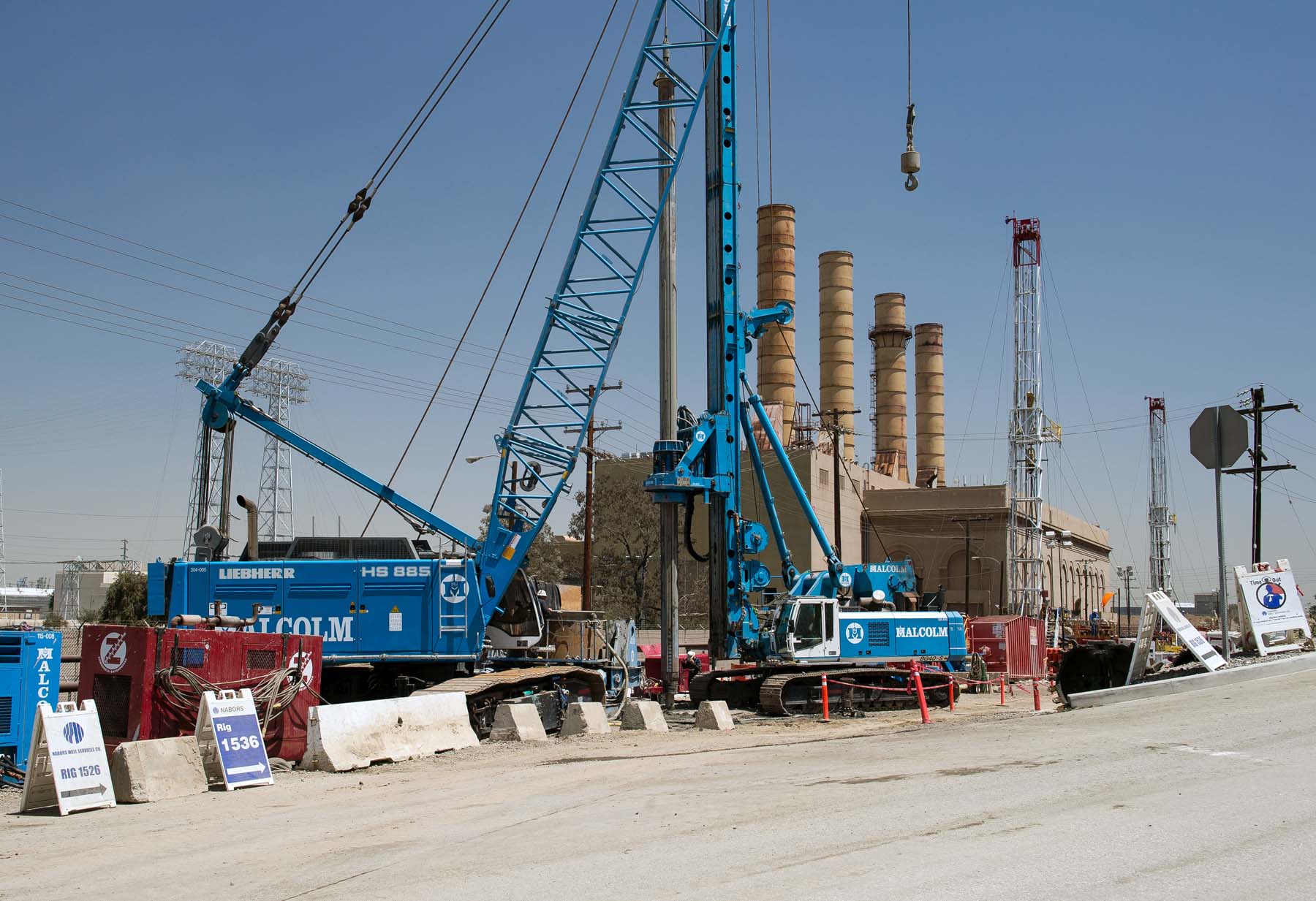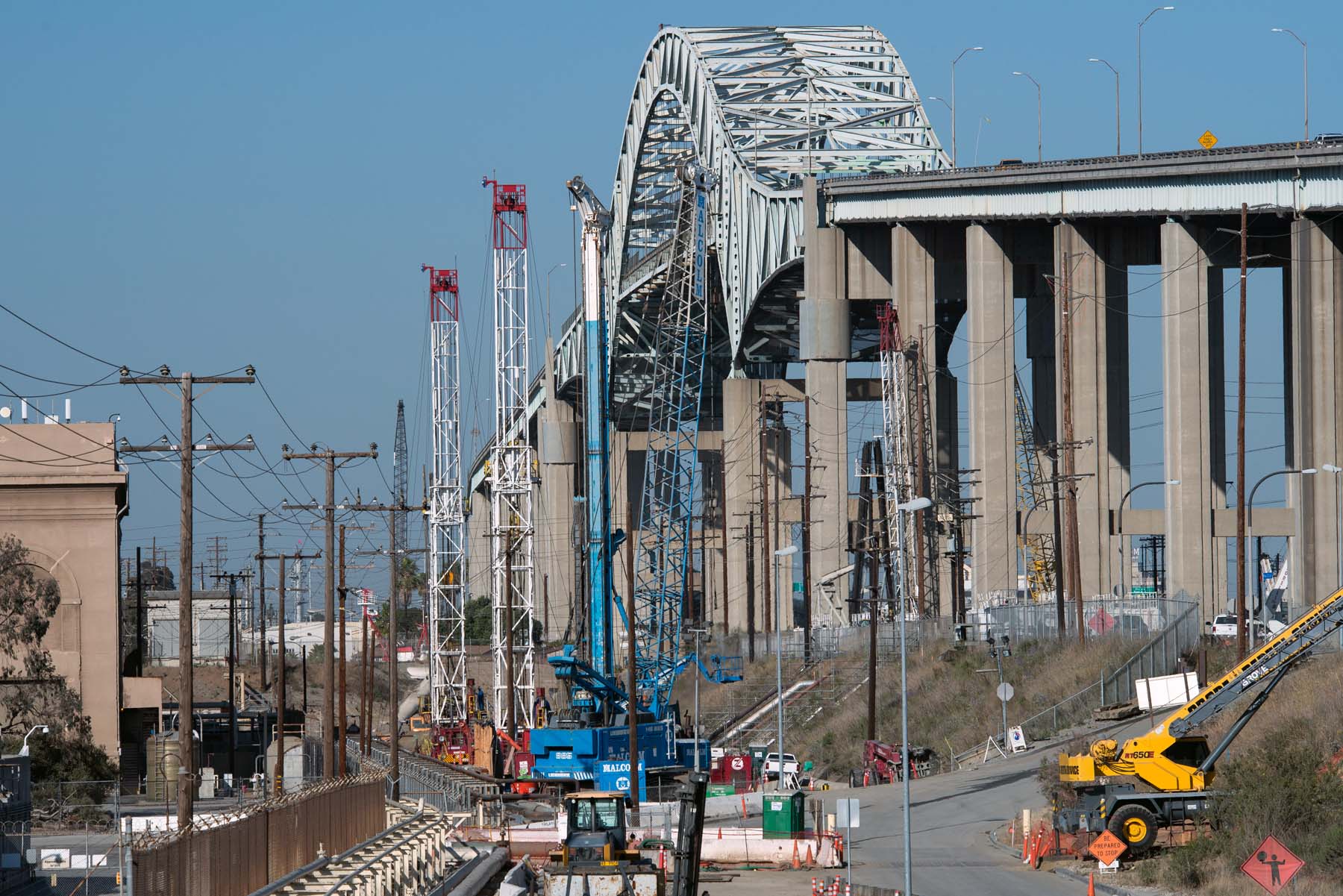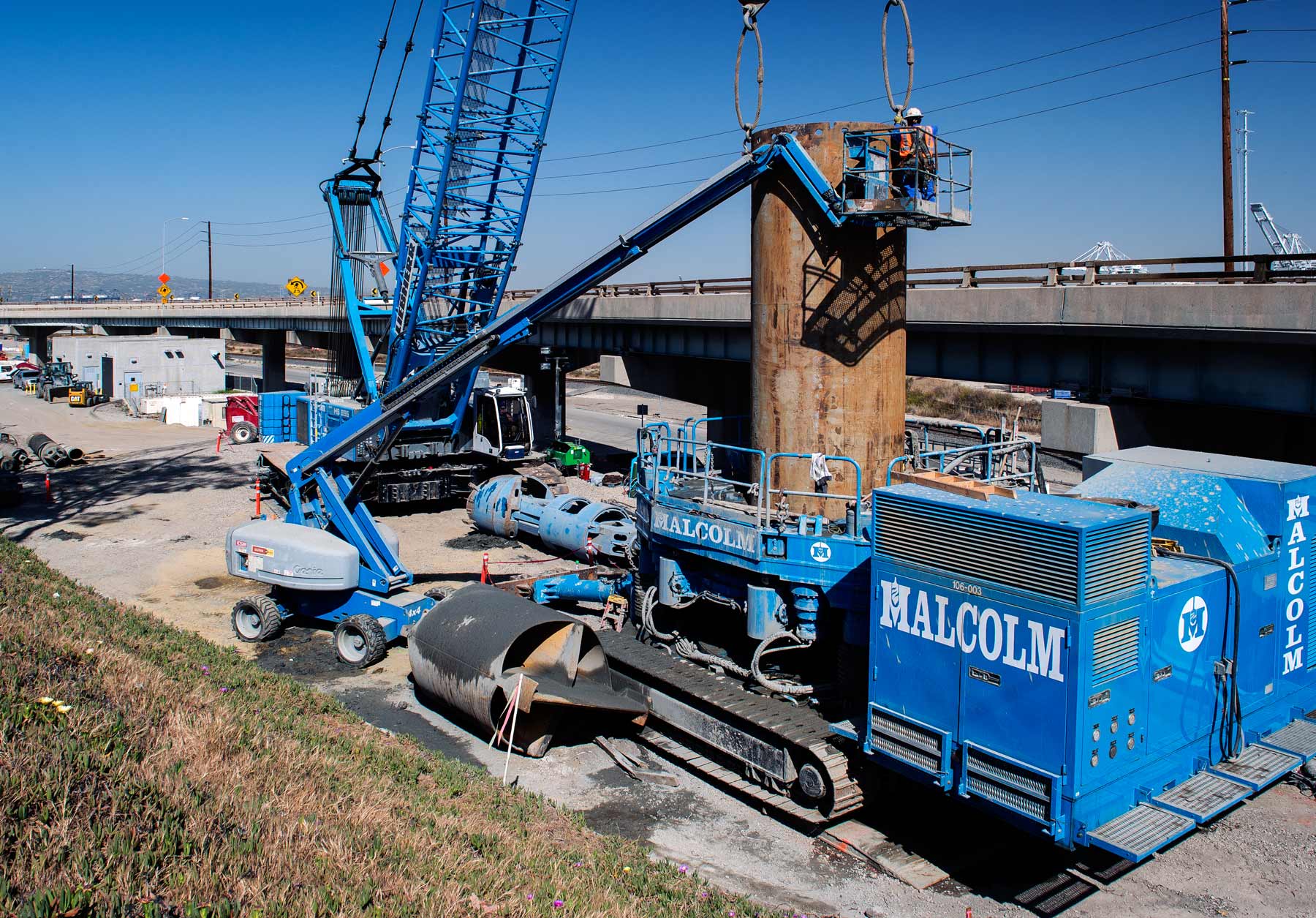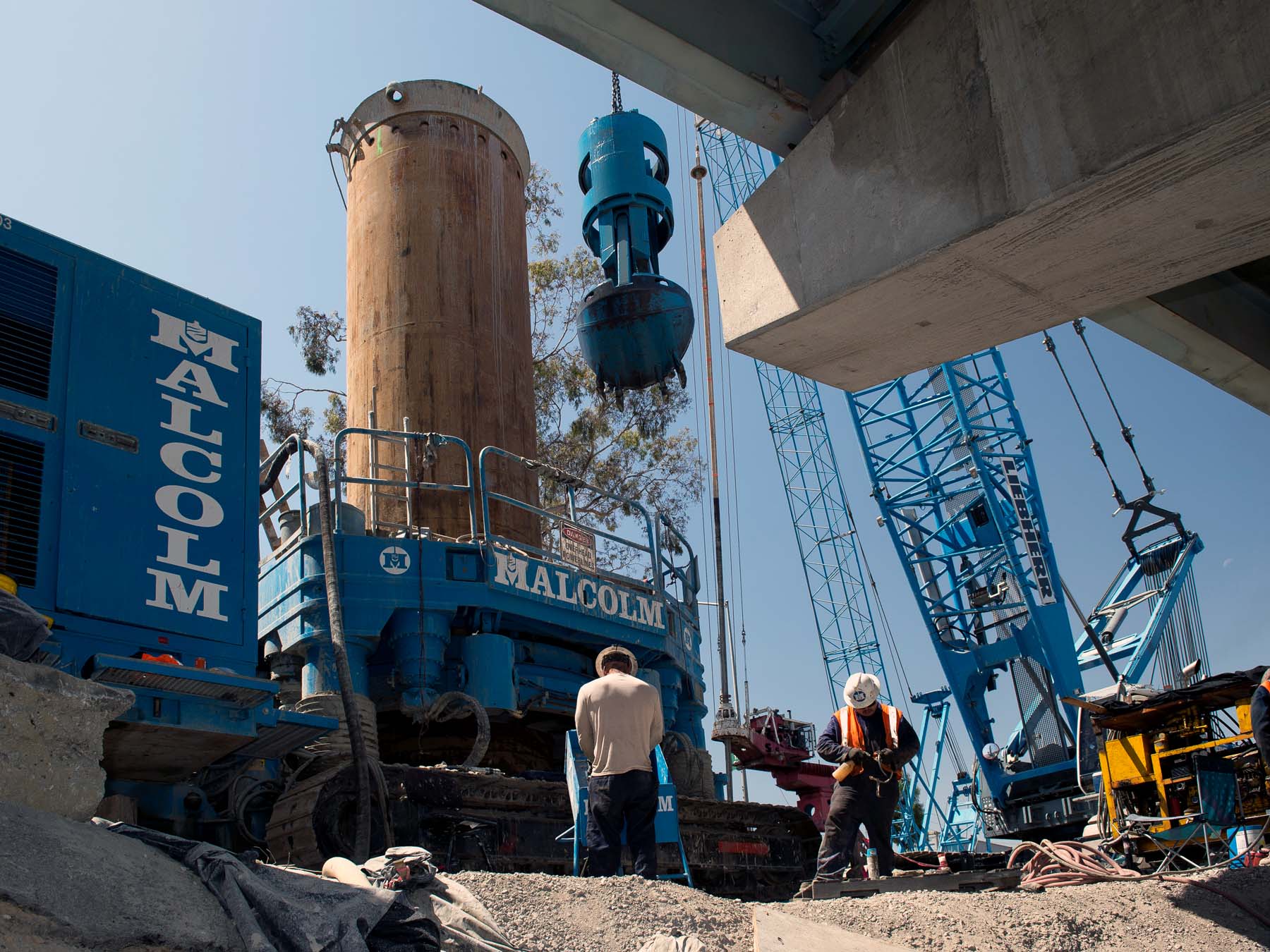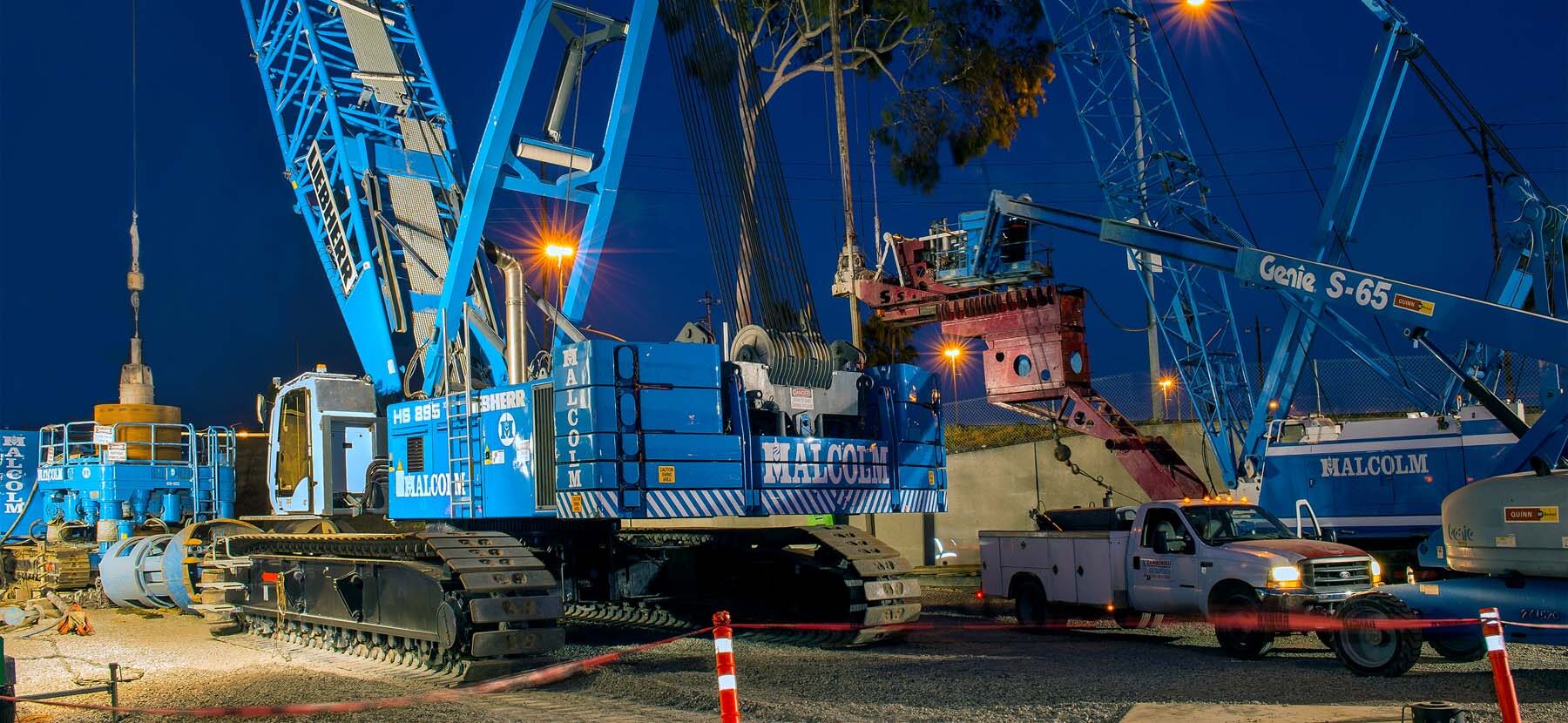The Complexities of Abandoning Oil Wells for the Gerald Desmond Bridge
The Gerald Desmond Bridge in Long Beach, California, spans the Wilmington Oil Field, one of the largest oil fields in the continental United States, boasting over 6,000 oil wells.
To construct the new bridge, all active and inactive wells interfering with the deep foundation system had to be abandoned and partially removed. This involved capping all wells and removing well casings (surface casing, conductor pipe, and well pipe) to an average depth of 195 feet below grade. Executing this proved challenging due to variations in casing dimensions and verticality, and the absence of a reference for such operations.
Discovering that the well casing was not as plumb as expected led to the decision to use an oversized temporary steel casing, twisted over the well casing for encapsulation. The well casing was then removed from within the temporary casing, from top to bottom, using oscillating and rotating segmental steel installation.
This method stabilized the native material outside the temporary casing, allowing removal of some material inside to free up the well casing. Cutting the well casing in segments, either from the inside out or the outside in, facilitated its removal.
Once the well casing and native material inside the temporary casing were removed to the desired depth, low-strength self-compacting concrete was placed using the tremie method to backfill the excavated shaft. The temporary casing was successfully extracted without disturbing the surrounding soil and nearby structures.
